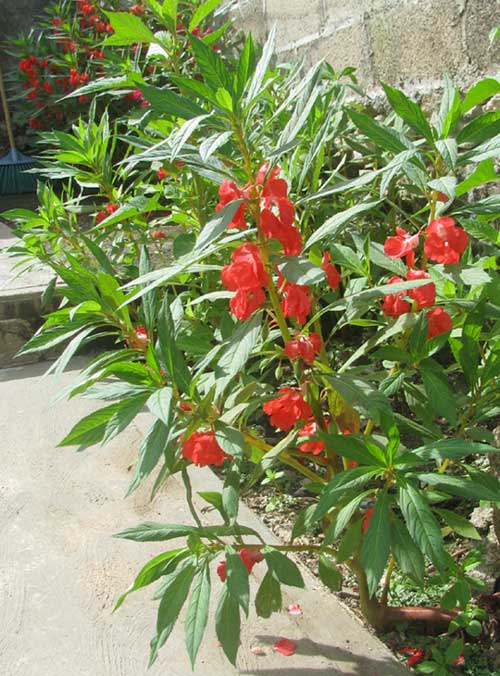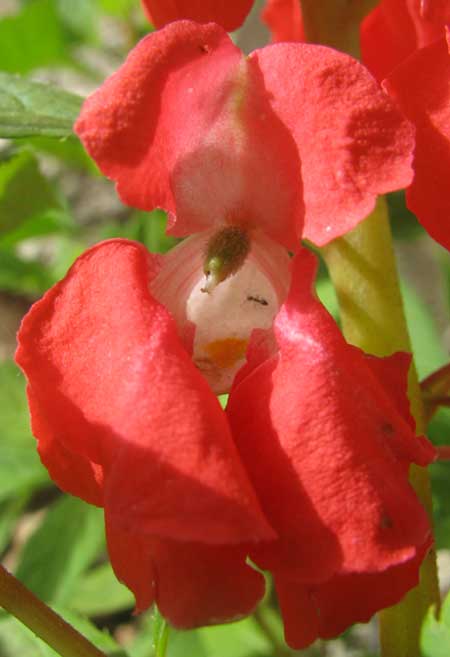Excerpts from Jim Conrad's
Naturalist Newsletter
from the November 20, 2011 Newsletter issued from Hacienda Chichen Resort beside Chichén Itzá Ruins; limestone bedrock; elevation ~39m (~128ft), N20.675°, W88.569°; central Yucatán state, MÉXICO
GARDEN BALSAM
Most days I take an hour-long walk with Diana, a new receptionist at the Hacienda's welcome desk needing to improve her English. Sometimes we walk into the nearby village of Chan San Felipe, which is as Maya villagy as you can get. Beside one house's cinderblock wall grows the much branching, knee-high annual shown below:

A view down a flower's throat showing that the corolla is "irregular" -- is bilaterally symmetrical -- is shown below:

A side view of the same flower showing a feature distinctive of the group of plants we're dealing with is shown next:

The distinctive feature is that one of the calyx's three sepals is much enlarged into a cuplike structure extending behind the flower into a long "honey-spur," which in the picture points toward the picture's top, right corner. Nectar is produced at the spur's base. On the cup's rim you can see a slender, greenish appendage directed backward. That's one of the calyx's two "regular sepals."
This is Garden Balsam, IMPATIENS BALSAMINA, and if you know your flowers you might remember that often members of the genus Impatiens are known as touch-me-nots because when their mature fruits are disturbed they explode, tossing their seeds far from the plant. I don't know if Garden Balsam fruits do that.
Garden Balsam, originally from India and Southeast Asia, has long been a garden favorite worldwide, and many cultivars of it have arisen. Red, pink, purple, and white flower colors are available, and there are double-flowered ones looking like camellia blossoms, and some with in-curving spurs. Despite such a variety of choices, today the species is losing ground to another "garden impatiens," Impatiens walleriana, which produces more flowers. Garden Balsam, though, as far as I'm concerned, has much more character, and is to be preferred.